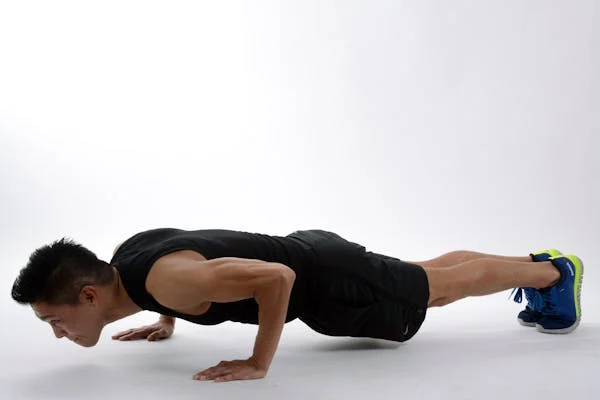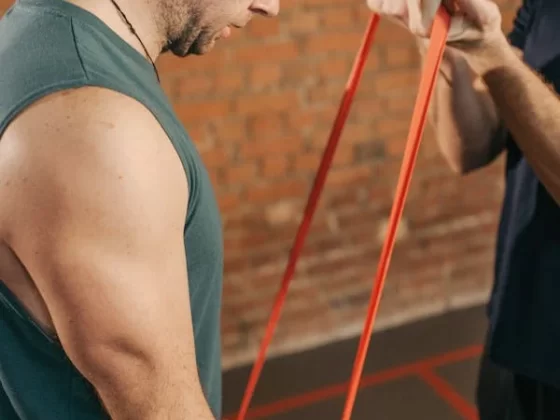
Change is the only constant thing in this world. So, as the earth revolves and our lives continue, we tend to cope with daily trends, whether they are helpful to us or not. Yet, the healthy workout trend of the best HIIT Exercises has now arisen. To learn more, read this article as we delve into the intricacies of high-intensity interval training exercises.
What is High-Intensity Interval Training?
High intensity interval training (HIIT) is a type of interval training that involves periods of high intensity exercise mixed with periods of rest or exercise at a lower intensity. This can include strenuous strength work, fast-paced cardio, or some combination of both.
High-Intensity Interval Training (HIIT) involves alternating high-intensity exercises with periods of low-intensity exercise or rest. HIIT, categorized into various subtypes, is commonly classified as low or high volume based on whether the active intervals last under or over 15 minutes.
A comprehensive review study has highlighted the efficacy of High-Intensity Interval Training (HIIT) programs across various health parameters. These programs significantly improved VO2 max and endurance capacity, enhancing cardiovascular fitness.
Furthermore, HIIT has proven beneficial in altering substrate metabolism, thereby contributing to better management of body composition and increasing insulin sensitivity. The cognitive benefits of HIIT have also been observed, with studies indicating enhancements in cognitive functions, underscoring its potential impact on mental acuity and cognitive health.
Moreover, HIIT emerges as a promising strategy for reducing the risk factors associated with numerous chronic diseases. Studies have shown its effectiveness in decreasing the likelihood of developing cardiovascular diseases, breast cancer, metabolic syndrome, and osteoarthritis. Notably, HIIT has been recognized for its potential to mitigate the effects of rheumatoid arthritis, a condition often linked to lower back pain, indicating its broad applicability in managing diverse health concerns and improving overall well-being.
Effects Supported by Evidence:
A thorough review study has identified the efficacy of High-Intensity Interval Training (HIIT) programs in enhancing various aspects of health and well-being. These programs have demonstrated notable improvements in vital physiological parameters such as VO2 max and endurance capacity, positively impacting cardiovascular fitness. Additionally, HIIT has been shown to influence substrate metabolism, leading to favorable changes in body composition and heightened insulin sensitivity, which are crucial for metabolic health. Moreover, HIIT’s benefits extend to cognitive functions, with evidence suggesting enhancements in mental acuity and cognitive performance.
Furthermore, HIIT is a promising approach to lowering the likelihood of developing chronic conditions. Studies indicate its effectiveness in reducing the possibility of cardiovascular diseases, breast cancer, metabolic syndrome, and osteoarthritis. Notably, HIIT has also demonstrated potential in managing the effects of rheumatoid arthritis, a condition associated with lower back pain, highlighting its broad utility in addressing diverse health concerns and promoting overall well-being.
Clinical Populations:
Growing evidence highlights the potential of High-Intensity Interval Training (HIIT) in managing chronic diseases, particularly in clinical populations. Among these, cardiovascular disease stands out as the most extensively studied. HIIT interventions have demonstrated improvements in peak oxygen consumption (VO2peak), functional capacity, and overall quality of life in cardiovascular patients. Notably, a recent randomized controlled trial revealed that after six months of supervised high-intensity interval training post-percutaneous Following coronary intervention, there was a reduction in atheroma volume within residual coronary atheromatous plaques.
While pulmonary disease and Type 2 Diabetes (T2D) have received comparatively less attention, HIIT has shown promise in improving functional capacity and quality of life and alleviating symptoms like dyspnea and leg discomfort in pulmonary disease patients. Similarly, for individuals with T2D, HIIT has been found effective in positively influencing parameters such as body fat percentage and peak power output.
In stroke recovery, various studies have reported positive outcomes associated with HIIT, including enhanced functional recovery, cardiorespiratory fitness (CRF), and improvements in gait parameters. However, further research is warranted to establish HIIT’s feasibility, safety, and efficacy in post-stroke rehabilitation, thus providing more explicit guidance for clinical practice in this domain.
Prescriptions:
By a guideline delineating the implementation and supervision of High-Intensity Interval Training (HIIT) in clinical populations, the following steps are recommended:
Step 1 involves measuring maximal heart rate (HRmax) through maximal exercise testing or its estimation using prediction equations. Step 2 entails the calculation of the HR target zone, typically equating to 85–95% of HR max. Subsequently, Step 3 advises validating this by Determining the heart rate target zone utilizing the Rating of Perceived Exertion (RPE) scale. This validation process involves initiating the first high-intensity interval at an RPE of 15 and concluding at an RPE of 17–18 within a 4-minute timeframe.
For subsequent intervals, participants are encouraged to attain an RPE of 17–18 by the halfway point at 2 minutes. Step 4 necessitates the validation of the HR target zone based on the highest recorded HR for each interval in Step 3. If the HR deviates from the target zone, Step 4a recommends calibration of the HR target zone. This calibration (Step 4b) can be achieved by repeating the maximal exercise test, estimating a new HRmax, and recalculating the HR target zone accordingly.
Clinical Considerations:
When engaging in High-Intensity Interval Training (HIIT), it’s crucial to recognize indications for ceasing the activity to ensure participant safety.
Indications include chest discomfort (angina), difficulty breathing (dyspnea), dizziness, confusion, or indications of inadequate blood flow. Should prompt immediate cessation.
Additionally, oxygen saturation drops below 88% or a significant rise in blood pressure exceeding 220/105mmHg during the exercise session warrants discontinuation. A decrease in systolic blood pressure greater than 10mmHg from baseline during high-intensity intervals or atypical arrhythmias are also red flags that necessitate stopping HIIT. Furthermore, if there’s a noticeable slowing of heart rate with increased workload or the emergence of any irregular heart rhythms, it’s advisable to halt the activity promptly.
Moreover, absolute contraindications must be considered before initiating HIIT to prevent adverse events. These include conditions such as obstructive left central artery disease, unstable angina, uncontrolled cardiac arrhythmias, acute endocarditis, myocarditis or pericarditis, and moderate to severe aortic stenosis. Decompensated heart failure, acute pulmonary embolism, aortic dissection, higher-degree heart block, hypertrophic obstructive cardiomyopathy, recent stroke or transient ischemic attack, uncontrolled diabetes, and retinopathy are also absolute contraindications.
Additionally, Advanced autonomic or peripheral neuropathy, acute systemic illness or fever, acute or chronic kidney failure, pulmonary fibrosis or interstitial disease, and recent heart attack (within the last four weeks), coronary artery bypass surgery (within the previous four weeks), or percutaneous intervention must be considered before engaging in HIIT.

Best HIIT Exercises Sample Routines:
High intensity interval training exercises vary from simple moves to combinations. To give you a sample of each type, here are a couple of workouts you can try on your own at home or in the gym.
Cardio and Core HIIT Workout
Cardio-based HIIT workouts are meant to burn more fat and increase your heart rate. This can lead to enhanced cardiovascular endurance. The exercises in this workout were chosen because they also engage the abdominal muscles to firm and tighten your waistline.
The exercises include:
-
Crossbody punches
Simple punches across the body from a standing position. During this move, make sure to keep your shoulders down and firm your abdominals.
-
Clapping jumping jacks
Jumping legs wide and narrow with a clap in front. These can easily be modified by stepping your feet side to side instead of hopping.
-
Burpees
Also known as the squat thrust. Hop to plank and back, then jump as high as you can. To modify, step your feet back and in.
-
Mountain climbers
A high intensity exercise that makes your heart rate rise. Challenge yourself by driving your knees forward as fast as you can.
Follow along and you will complete each exercise consecutively for 30 seconds. Once you’ve completed all four exercises, you get 30 seconds of rest. Don’t be afraid to pause if you are winded and need a break. This is a tough workout, especially if it is your first time trying HIIT.
Full Body HIIT Workout
This is a full body high intensity interval workout that combines strength and cardio moves. By completing this workout, you will gain muscle definition in your chest, back, legs, triceps, biceps, and abdominals while increasing your calorie burn.
It includes the following exercises:
-
Pushup and renegade row
Also known as a pushup position row. Avoid rotating you body as you lift the dumbbell. If it feels too difficult on your toes, lower your knees.
-
Side lunge and deadlift
Step sideways about three to four feet and bend the knee of the landing leg. Simultaneously hinge at the hips and reach toward the floor. It’s important to keep your back flat as you hinge to avoid injury.
-
Manmaker or Woman-Maker
This is a burpee with a curl and overhead press. Drop your hips before you stand to lengthen your spine. Your lift will be safer and stronger.
These combination moves increase the amount of muscles working during each exercise to create a more challenging and intense workout. Follow along with the video. The interval is set at 35 seconds of work with fifteen seconds of rest in between. You will complete three rounds. Don’t be afraid to pause the video if you need longer breaks, especially if it is your first time trying HIIT.

Why Try HIIT?
HIIT is popular for three main reasons.
- It challenges you to work harder than you do during rep-based workouts.
- It drastically reduce the amount of time it takes you to get in shape.
- It is much shorter than a traditional workout.
While high intensity interval training workouts vary in length, they don’t often extend longer than 30 minutes. In fact, you can squeeze an effective HIIT workout into your day in under five minutes.
High intensity interval training exercise is not complicated. It is a simple way to change up your workout routine so that you gain the same benefits of traditional exercise in a shorter amount of time. If you’re ready to take your fitness to the next level or you’re looking to squeeze your workout into a busy schedule, add high intensity interval training into your routine once or twice a week.
Conclusion:
Combining exercises to create a personalized workout routine can be stressful, but to help you decide, consider going to professionals and consulting to know your body’s needed workouts. It is also essential to know your limitations when doing these workouts. HIIT is truly beneficial; that is a fact! Try it on and improve your pre-existing workout regimens.














